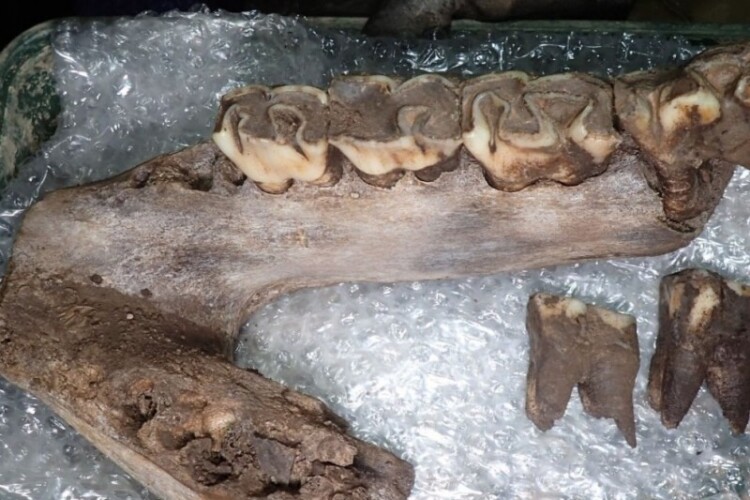The megafauna found in a pit of bones under a housing development site near Plymouth is believed to date back around 30,000-60,000 years ago in the Middle Devensian period – the Ice Age.
Sherford is a new 5,500-home community under development by Taylor Wimpey and Vistry Partnerships. They instigated archaeological work at the start of construction in 2015 and have remained committed to funding an ongoing programme of archaeological investigation ever since. Excavation during infrastructure work led to the discovery of these animal remains, in an area near old lime kilns and Sherford Quarry.
Over recent months, the archaeological team has conducted a detailed scientific sampling exercise to obtain as much information about the findings as possible.
It is hoped that the Sherford discoveries will provide insight into early Britain. Understanding the range of mammals present, particularly herbivores and their food sources, provides an insight into the plants that may have existed in the local environment, for which little evidence survives today.
The work has been led by an expert team that includes Orion Heritage and Exeter-based AC Archaeology.
The animal bones and environmental samples have been recorded and removed from the ground and are now undergoing academic analysis and conservation. It is expected that the full archive of remains will go to The Box – Plymouth’s new museum – just a few miles from where they were uncovered.
The Sherford Consortium will preserve the area where the remains have been found. The underground space will be conserved, and no construction will take place on top of it.

Lead archaeologist Rob Bourn, managing director of Orion Heritage, said: “This is a major discovery of national significance – a once in a lifetime experience for those involved. Construction happening at Sherford is the sole reason these findings have been discovered and it is remarkable that they have laid undisturbed until now. To find such an array of artefacts untouched for so long is a rare and special occurrence. Equally rare is the presence of complete or semi-complete individual animals. We look forward to reaching the stage where the discoveries can be shared and displayed, so that everyone can find out more about our distant past.”
Historic England chief executive Duncan Wilson said: “This discovery is exceptional. To have found partial remains of such a range of species here in Devon gives us a brilliant insight into the animals which roamed around Ice Age Britain thousands of years ago, as well as a better understanding of the environment and climate at the time. We are delighted that this important part of our history will be preserved for future generations.”
The detailed samples taken from the site have so far uncovered:
- Partial remains of a woolly mammoth, including a tusk, molar tooth and other bones
- Partial remains of a woolly rhinoceros, including an incomplete skull and lower jaw
- A virtually complete wolf skeleton
- Partial remains of hyena, horse, reindeer, mountain hare and red fox
- Bones of various small mammals such as bats and shrews. It is anticipated that further bones of small mammals will be identified during post-excavation laboratory analysis.
Whether all of the creatures uncovered at Sherford coexisted in a similar time period, or existed at different points over a much longer time span is uncertain. One theory is that some of the creatures fell into a pit and were unable to escape, and carnivorous scavengers followed and met a similar fate – or the animals died elsewhere and the bones washed into the area over a period of time.
The archaeological excavation of the Ice Age animal remains has just been completed, but work continues offsite, where the bones are now being cleaned, conserved and studied. A
Rob Bourn concluded: “A discovery like this would not have happened without the new town being created at Sherford; the work to professionally recover, document and analyse the findings would not have been possible without the developers’ full cooperation and proactive approach to archaeology.”
Got a story? Email news@theconstructionindex.co.uk



